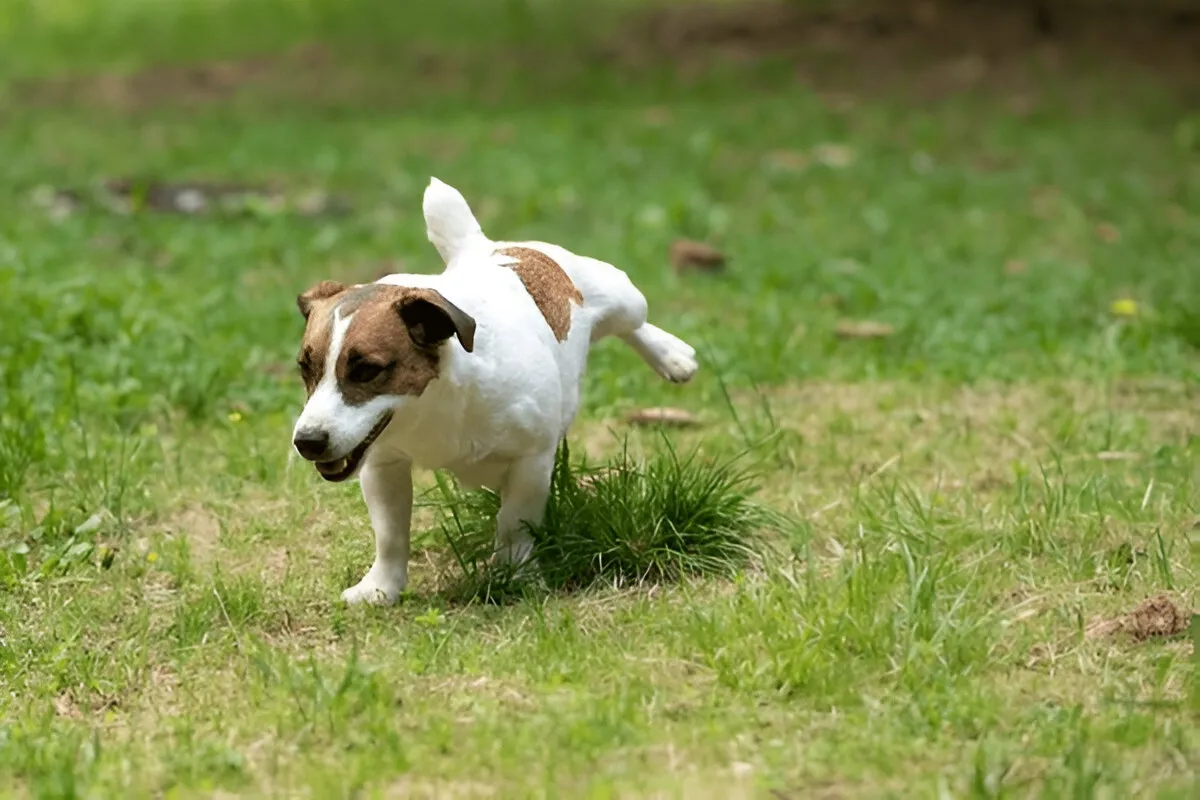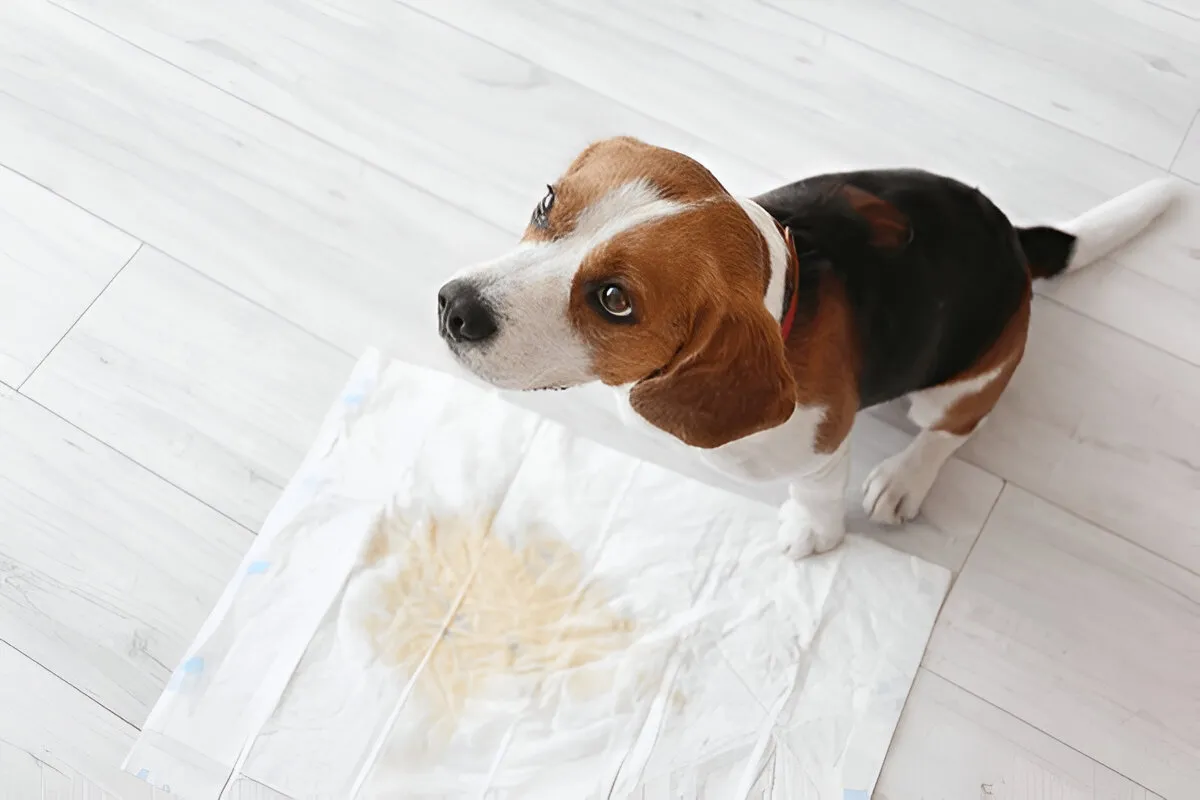
Indoor potty training sounds like a dream when it’s pouring outside or when you live ten floors up in a city apartment. But is it better than traditional outdoor training? Well, like most dog things, it kinda depends on you and your pup’s daily routine.
It doesn’t matter whether you are the owner of a small puppy or a large dog; using the correct method can help.
So, let’s make it simple, which one is better, indoor, outdoor, or a mix of both?
What Makes Indoor Potty Training a Smart Option?
Indoor potty training is good for apartment dogs, small breeds, and pet parents who have small outdoor access. It offers flexibility and convenience while also creating a potty routine your dog can follow consistently.
Let’s face it—not everyone can run outside every three hours. And some dogs? They don’t exactly love freezing wind or soaking rain. Indoor setups give you the chance to control the space, timing, and clean-up without relying on weather or elevators.
So, What Exactly Is Indoor Potty Training?
If you’re picturing old-school newspaper on the kitchen floor, let’s upgrade that image.
Indoor potty training usually means using one of these:
- Pee pads: Disposable or washable pads that absorb liquid.
- Artificial turf patches: Reusable grassy squares for peeing.
- Balcony potty systems: Grass or turf with built-in drainage trays.
- Litter box for dogs: Yep, that exists too, for tiny breeds or older dogs.
Brands like Fresh Patch even sell real grass in boxes you can place indoors or on balconies. It looks and feels more natural than pee pads, and some dogs prefer it.
But Does It Work?
Here’s the thing: indoor potty training works—if you commit to the routine. You can’t just plop a pad in the corner and hope the dog figures it out.
Dogs need guidance. Timing, consistency, and positive reinforcement matter here just as much as with outdoor training.
Start with one clearly defined spot. Reward every successful potty trip. Skip the scolding—just redirect calmly when mistakes happen.
Over time, they’ll connect the dots: “This is where I go. Good things happen when I use the patch
When Is Outdoor Potty Training a Better Fit?

Okay, let’s talk about the OG method—going outside.
For many dogs, especially larger breeds or high-energy pups, outdoor routine potty training is just easier. There’s space, smells, and it lines up naturally with their instincts.
Here’s when outdoor training is probably your best bet:
- You live near a green space or have a yard.
- Your dog needs long walks anyway.
- You’re home often enough to keep a routine.
- You want to avoid an indoor mess entirely.
Yard training, in particular, can be smooth as long as your yard is safe and accessible. It gives your dog freedom.
What About Urban Dog Owners?
It’s tougher to decide if you’re in the city. Urban dog owners deal with traffic, elevators, icy sidewalks, and tiny apartments.
Dogs in cities often adapt to a hybrid routine: they go outside when possible, but they also have an indoor spot as backup. This mix gives flexibility and keeps both of you sane during snowstorms or late workdays.
And don’t worry—it’s not “confusing” for the dog if you do it right. Clear boundaries and consistent rewards help them understand what’s expected in both environments.
Pee Pads vs Grass Patches: Which One’s Better?
Honestly? It depends on your dog.
Pee pads vs grass patches is a classic debate. Pads are cheaper, easy to replace, and great for small dogs or quick fixes. But they can slide around and don’t always feel “right” to dogs who are used to grass.
Grass patches (real or fake) give a more natural feel. They’re ideal for training puppies who’ll eventually transition to the yard—or for dogs who hesitate on synthetic materials.
If you’re training indoors long-term, grass patches might win. But if you’re in a pinch or on a budget, pee pads get the job done just fin
Indoor Potty Training Issues and What You Can Do
Let’s keep it real: indoor potty training isn’t all roses and puppy cuddles.
Here are a few common issues:
- Missing the pad: Dogs need clear targets and a consistent location.
- Chewing the pad: Try grass patches or holders to prevent play.
- Bad smell: Clean regularly and use enzyme sprays.
- Confusion about where to go: Avoid moving the potty spot around too often.
Sometimes dogs get lazy or treat the whole house like a toilet. That’s usually a sign the schedule’s off or they never fully learned what you wanted. Go back to basics. Set a timer. Reward every correct attempt. Stay calm during accidents.
Can You Switch from Indoor to Outdoor Later?
Yes, and a lot of people do! Let’s say you start with pee pads while your puppy’s too young to go outside safely, or during a brutal winter. Once they’re a little older or the weather clears up, you can transition.
Try moving the pad step-by-step toward the door. Then place it just outside. Eventually, ditch it altogether and guide your dog to their new potty spot.
Be patient. Use rewards. And remember—dog potty training is a process. Not a one-week trick.
Products That Can Help (and Not Just Add to the Clutter)
Here’s what’s useful:
- Fresh Patch (real grass delivery—dogs love it)
- Petco turf trays (reusable, easy to clean)
- Odor-neutralizing cleaners (always enzyme-based)
- Pee pad holders (no sliding around)
- Balcony potty systems (drainage included = lifesaver)
Don’t overcomplicate it. You don’t need everything. Just choose one system and stick with it. Too many options confuse your dog (and probably you, too).
What Do Trainers Recommend?

Most pros agree: there’s no one right way. But they all say the same thing—consistency wins.
At Prestige Dog Training, we help pet parents figure out what works for their lifestyle. Got a fourth-floor apartment and a nine-to-five job? We’ll set up a solid indoor system. Have outdoor space and free time for walks? We’ll train your dog for that too.
Our trainers teach both indoor potty training and outdoor routines with zero judgment—just real-life strategies that work in real homes.
Conclusion
Indoor potty training can be a lifesaver if you live in a place that often experiences extreme weather. For backup, it is also a good option. It is adaptable, adjustable, and effective when used with the appropriate resources.
Remember that it all relates to what works for your daily schedule, whether you’re considering pee pads against grass patches, testing out a dog litter box, or looking for pet toilet options for your balcony.
At Prestige Dog Training, we help dog owners create smart potty plans that work. Whether it’s inside, outside, or a mix of both, we make training feel doable, not overwhelming.
Because at the end of the day, it’s not about where they go—it’s about getting them to go in the right place. Every time.



